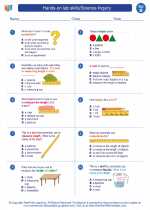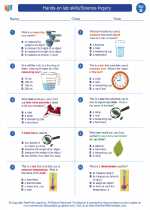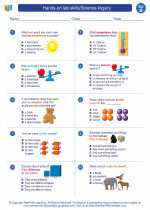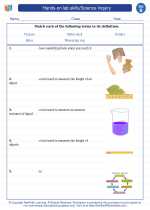Force
Force is a push or pull upon an object resulting from the object's interaction with another object. It is a vector quantity, which means it has both magnitude and direction. In physics, force is described by Isaac Newton's three laws of motion.
Types of Forces
There are several types of forces, including:
- Gravity: The force that pulls objects towards each other.
- Friction: The force that opposes the motion of an object.
- Normal Force: The force exerted by a surface to support the weight of an object resting on it.
- Tension: The force transmitted through a string, rope, cable, or wire when it is pulled tight by forces acting from opposite ends.
- Applied Force: A force that is applied to an object by a person or another object.
Newton's Laws of Motion
Newton's three laws of motion describe the relationship between the motion of an object and the forces acting on it.
- First Law (Law of Inertia): An object at rest stays at rest and an object in motion stays in motion with the same speed and in the same direction unless acted upon by an unbalanced force.
- Second Law (Law of Acceleration): The acceleration of an object is directly proportional to the net force acting on it and inversely proportional to its mass. This is expressed as the equation F = ma.
- Third Law (Action-Reaction Law): For every action, there is an equal and opposite reaction.
Study Guide
To study force effectively, consider the following:
- Understand the concept of force as a push or pull.
- Learn about the different types of forces and their effects on objects.
- Memorize Newton's laws of motion and understand their implications.
- Practice solving problems related to force, mass, and acceleration using Newton's second law.
- Conduct experiments to observe and measure the effects of different forces.
- Review real-life examples of force in action, such as the motion of vehicles, the behavior of objects on inclined planes, and the interaction of objects in space.
By understanding the concept of force and its applications, you can gain a deeper appreciation for the fundamental principles governing the behavior of objects in the physical world.
[Force] Related Worksheets and Study Guides:
.◂Science Worksheets and Study Guides Second Grade. Hands-on lab skills/Science Inquiry
Study Guide Hands-on lab skills/Science Inquiry
Hands-on lab skills/Science Inquiry  Worksheet/Answer key
Worksheet/Answer key Hands-on lab skills/Science Inquiry
Hands-on lab skills/Science Inquiry  Worksheet/Answer key
Worksheet/Answer key Hands-on lab skills/Science Inquiry
Hands-on lab skills/Science Inquiry  Worksheet/Answer key
Worksheet/Answer key Hands-on lab skills/Science Inquiry
Hands-on lab skills/Science Inquiry  Vocabulary/Answer key
Vocabulary/Answer key Hands-on lab skills/Science Inquiry
Hands-on lab skills/Science Inquiry 

 Worksheet/Answer key
Worksheet/Answer key
 Worksheet/Answer key
Worksheet/Answer key
 Worksheet/Answer key
Worksheet/Answer key
 Vocabulary/Answer key
Vocabulary/Answer key

The resources above cover the following skills:
PHYSICAL SCIENCE (NGSS)
Matter and its Interactions
Students who demonstrate understanding can:
Plan and conduct an investigation to describe and classify different kinds of materials by their observable properties.
Analyze data obtained from testing different materials to determine which materials have the properties that are best suited for an intended purpose.